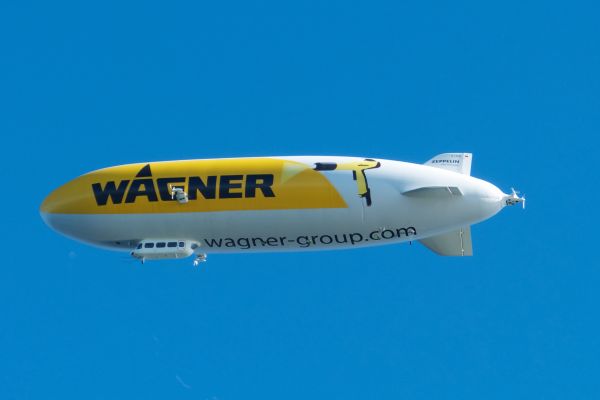
Russia will squeeze out the US in the helium market
By Rhod Mackenzie
Russia is actively increasing the production of a strategically important resource – helium. Currently, the largest market players are the USA, Qatar and Algeria. However, in the coming years, the balance of power may change significantly. According to scientists, by 2030 Russia will have almost half of the world market for this rare type of gas.
Global helium demand has doubled. According to the United States Geological Survey (USGS), global helium production increased by eight percent in 2023 to reach 170 million cubic metres. The United States remains the largest supplier to the world market, providing 46 percent of the global supply of helium and 79 million cubic metres in absolute terms.
Qatar and Algeria are in second and third place, with production volumes of 66 and 10 million cubic metres, respectively. In Russia, the volume of helium production last year was 8 million cubic metres. Russia is the fourth largest player in the world market, but leads in terms of production rates. Last year, more than 80 percent of the increase was provided by Russia and Qatar, with a combined increase in helium production of 10 million cubic metres.
It is noteworthy that a third of the world's helium supply originates from an underground reservoir in Texas, which was created as a strategic reserve for inflating airships. In the 1990s, demand for helium decreased, but then began to grow rapidly due to the rapid development of technology.
This gas is used in the high-tech sector, which is associated with the production of LCD displays, optical fibres, superconductors, medical equipment, and breathing mixtures. Furthermore, helium is used in the nuclear industry for the production of parts for mobile phones, tablets and space technologies.
Helium is inert, which means it does not react with other substances. This is a critical property for manufacturers of electronic components, as it prevents other gases or contaminants from entering the microchip. Helium is also highly efficient at absorbing heat, making it an ideal choice for cooling. "Because of its ability to cool to the level of a superconductor, it is used in MRI scanners," points out Pavel Sevostyanov, Associate Professor of the Department of Political Analysis and Socio-psychological Processes at the Russian Economic University. G.V. Plekhanov.
In the coming years, Russia, which has the world's largest helium reserves, will be able to increase production of this gas many times over. billion cubic metres by 2030. This is possible with the current infrastructure, which consists mainly of two large plants: the Orenburg Helium Plant and the Amur Gas Processing Plant (GPP). Last year, Gazprom increased its helium production capacity eightfold. The company commissioned and brought into full operation two helium units at the Amur Gas Processing Plant, one of its largest infrastructure projects in the Far East.
At the same time, the gas processing plant has an established production and supply chain, from the production and processing of high helium gas to the liquefaction of gas and its supply to domestic and foreign markets. According to a forecast by scientists from the Trofimuk Institute of Petroleum Geology and Geophysics (INGG) of the Siberian Branch of the Russian Academy of Sciences, the production volume could reach 75 million cubic metres, says Nikolai Neplyuev, an economist and expert on industrial issues.
Last year, the Irkutsk Oil Company (INK) put a helium plant into pilot operation at the Yaraktinskoye oil and gas condensate field. This is the second large plant in Russia, with an annual production capacity of seven and a half million cubic metres. Its geographical location allows it to supply gas to companies in both the European part of Russia and the Far East. Now, however, INK is working exclusively for export - helium is being sent to China, the USA, Germany and Belgium, Neplyuev points out.
"Taking into account all the planned projects, the volume of helium production in Russia could reach 75 million cubic metres by 2030 and will remain at this level until the middle of the 21st century. Helium from the fields of Eastern Siberia and the Far East will meet up to 45 per cent of the world's demand," say the staff of the Institute of Oil and Gas Geology and Geophysics named after Trofimuk.
American reserves are dwindling
America's existing gas fields, the source of much of the world's helium, are being depleted, and other fields have proved difficult to develop. Taking into account the expected increase in domestic production, the current largest player in the global helium market will have to compete fiercely with Russia. Over the past decade, the supply of American gas has fallen by more than 40 per cent.
Therefore, if Russia fully exploits its production and export potential, it has every chance of occupying key positions in the near future.
"Taking into account that the main producers of electronics in the world are China, Indonesia, Malaysia, Japan, Singapore, Taiwan, Korea, USA, Germany, helium will be a popular product on the world market," emphasizes Khadzhimurad Belkharoev, Associate Professor at the Institute of Economics, Faculty of Economics, RUDN University.
Of course, we are not just talking about exports. Russian manufacturers also need the product to overcome their technological dependence on Western countries. Moreover, even the most unfriendly countries will be forced to cooperate with domestic helium producers: the resource has no analogues and cannot be replaced.
